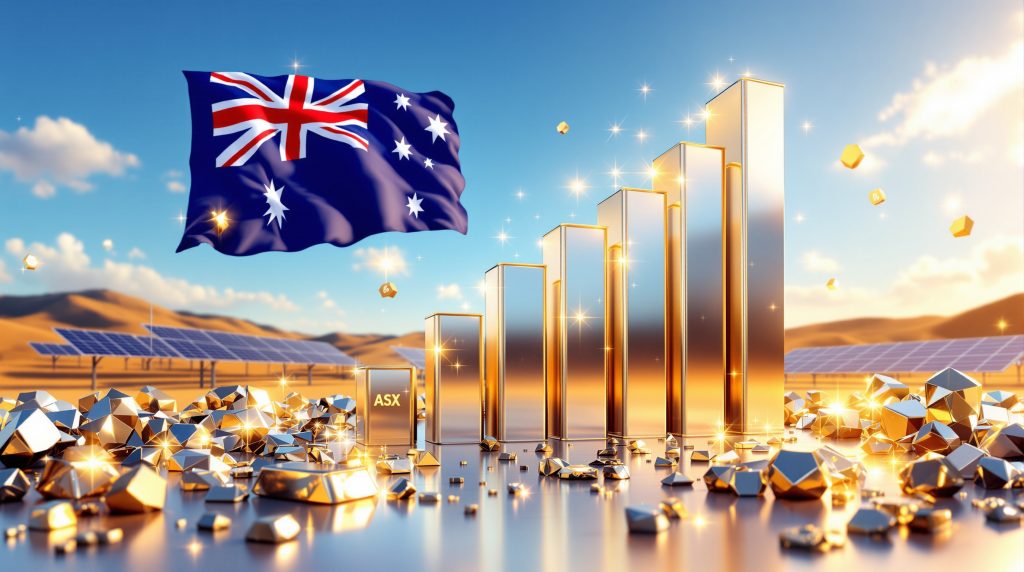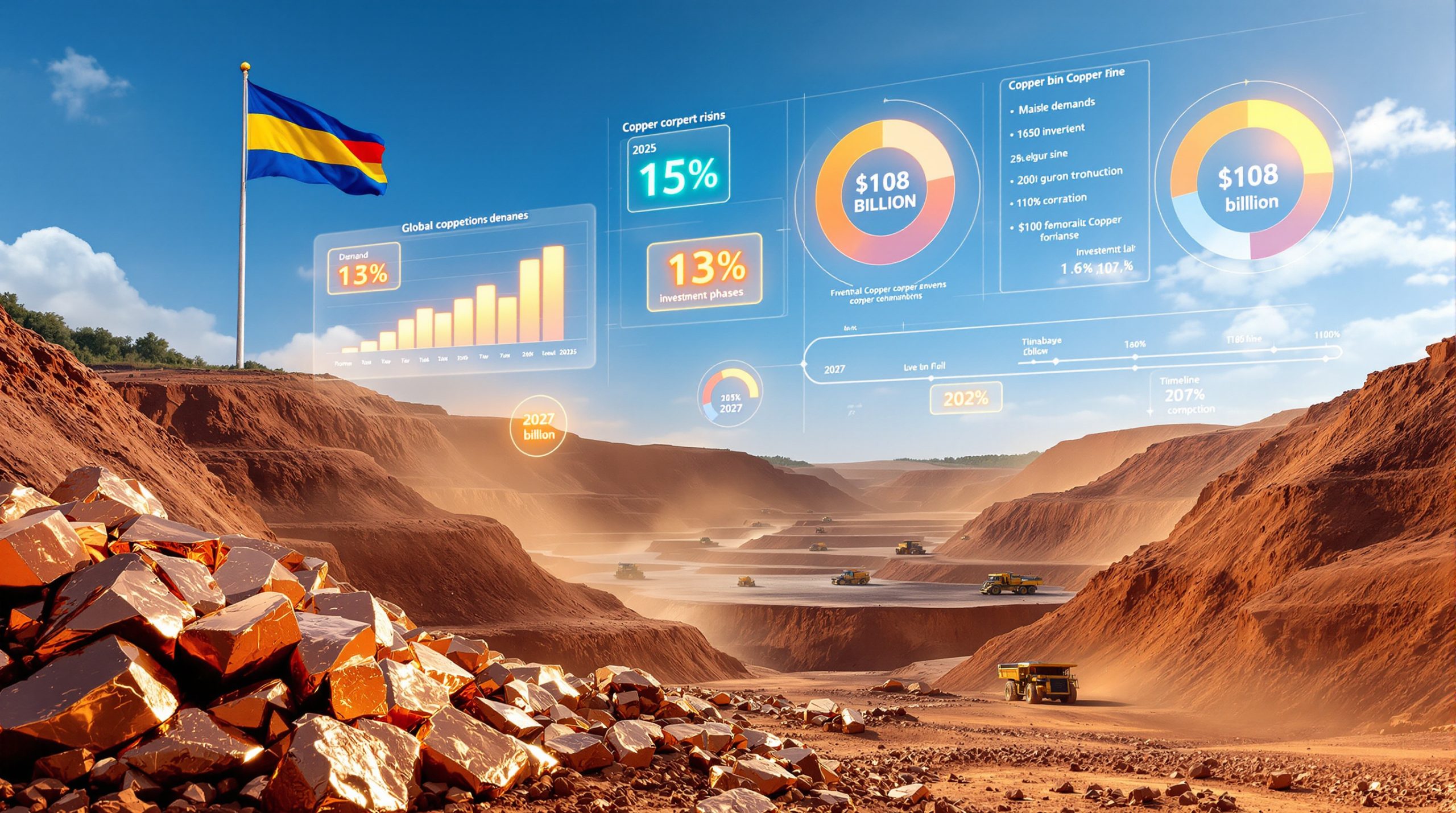What Makes Silver Mining Attractive on the ASX in 2025?
Silver has captured investor attention in 2025 as one of the most compelling precious metals investment opportunities. The white metal has demonstrated remarkable price appreciation, with spot silver surging from around A$21.50 per ounce in mid-2021 to recent peaks approaching A$38 per ounce. The Australian Securities Exchange hosts a diverse range of companies offering silver exposure, from established producers to emerging exploration companies positioned to capitalise on this dual-purpose commodity.
The investment case for silver stocks on the ASX centres around several key factors. Australia maintains the world's largest share of global economic silver resources, surpassing traditional silver-producing nations like Mexico and Canada according to Geoscience Australia data. This resource advantage provides ASX-listed companies with significant long-term development potential across various geological terrains and mining environments.
Furthermore, silver's unique position as both an investment asset and industrial commodity creates multiple demand drivers that support sustained price growth. Unlike gold, which serves primarily as a store of value, silver benefits from expanding industrial applications alongside traditional precious metals investment demand.
Why Is Silver Experiencing a Major Price Rally?
Industrial Demand Driving Structural Changes
The silver market faces unprecedented industrial demand growth across multiple sectors, particularly renewable energy infrastructure and advanced electronics manufacturing. Solar panel production now consumes approximately 14% of annual global silver supply, with photovoltaic applications requiring silver's exceptional electrical conductivity properties that cannot be easily substituted.
Electric vehicle manufacturing contributes additional industrial demand, with modern vehicles containing significant silver content in electrical systems, battery management components, and charging infrastructure. Industry analysts project electric vehicle silver consumption could triple by 2030 as global EV adoption accelerates.
The electronics sector represents over 40% of industrial silver demand, driven by 5G infrastructure deployment, advanced semiconductor manufacturing, and emerging technologies including artificial intelligence hardware requirements.
Supply Constraints Creating Market Tightness
Global silver mine production has declined in recent years due to operational challenges affecting primary production sources. Silver supply deficits have created additional market pressure, with approximately 75% of silver supply coming as a byproduct from base metals mining operations, creating supply vulnerabilities when zinc, lead, and copper mining faces disruptions.
Recent supply disruptions in major producing regions have tightened available silver supplies. Guatemala's production declined significantly after legal challenges affected major operations, whilst maintenance issues at Canadian processing facilities reduced North American output.
Supply-Demand Fundamentals:
- Global mine production: 855.7 million ounces (2018)
- Industrial fabrication demand: 578 million ounces
- Investment demand: 230 million ounces
- Total physical demand: 1.03 billion ounces
Silver's supply-demand imbalance has created structural market tightness, with industrial demand growth outpacing new mine supply additions across multiple reporting periods.
How Do ASX Silver Stocks Compare to Global Opportunities?
Australia's Resource Advantage
Australia's geological diversity provides silver companies with access to various deposit types and metallurgical characteristics. The country's silver resources span multiple geological provinces, from Queensland's polymetallic systems to New South Wales' epithermal deposits and South Australia's sediment-hosted mineralisation.
Domestic operations benefit from established mining infrastructure, experienced workforce availability, and proximity to processing facilities and export terminals. The regulatory environment remains supportive of mining development, with clear permitting processes and established frameworks for environmental management.
Operational Diversity Across Mining Methods
Silver stocks on the ASX demonstrate remarkable operational diversity, employing various extraction methods suited to their specific geological settings:
Mining Methods and Characteristics:
| Mining Approach | Grade Range (Ag g/t) | Capital Intensity | Development Timeline |
|---|---|---|---|
| Underground Operations | 150-500 | High ($150M+) | 4-6 years |
| Open Pit Mining | 40-150 | Medium ($75-200M) | 2-4 years |
| Heap Leach Processing | 25-100 | Lower ($25-100M) | 1-3 years |
| Byproduct Recovery | Variable | Integrated | Ongoing |
This diversity allows investors to access different risk-return profiles within the silver sector, from high-grade underground operations to lower-cost surface mining projects. Consequently, investors can find suitable options matching their risk tolerance and investment objectives.
Which ASX Companies Offer the Highest Silver Exposure?
Pure-Play Silver Developers
Several ASX companies focus primarily on silver development, providing investors with concentrated exposure to silver price movements. Companies with silver exposure rates above 70% of their total resource value include specialised silver developers and companies with high-grade silver-focused projects.
These pure-play opportunities allow investors to participate directly in silver's price appreciation without dilution from other commodity exposures. Silver squeeze strategies often favour such focused companies, as they typically demonstrate stronger correlation with silver price movements compared to diversified mining operations.
For instance, investors seeking maximum silver exposure should examine companies where silver revenues constitute the majority of their earnings potential.
Polymetallic Operations with Significant Silver Credits
Many successful ASX silver operations extract silver alongside base metals like zinc, lead, and copper. This polymetallic approach can provide more robust project economics through revenue diversification whilst maintaining substantial silver exposure.
Silver Revenue Contribution Analysis:
- High Silver Exposure (>60%): Direct correlation with silver prices
- Moderate Silver Exposure (30-60%): Balanced commodity exposure
- Byproduct Silver (<30%): Limited silver price sensitivity
Investment professionals often recommend silver exposure rates above 50% for investors seeking meaningful participation in silver price movements whilst maintaining operational diversification benefits.
What Are the Key Geological Regions for ASX Silver Companies?
Australian Domestic Operations
Australia's silver operations span several major geological provinces, each offering distinct advantages. Queensland hosts polymetallic deposits containing silver alongside zinc and lead, particularly in the Mount Isa region and Broken Hill-style deposits.
New South Wales provides epithermal silver systems and historic silver mining districts that offer development opportunities for both underground and surface operations. Similarly, South Australia contains diverse silver mineralisation styles, from sediment-hosted deposits to volcanic-associated systems.
Western Australia offers limited silver exposure primarily through byproduct recovery from gold operations and base metals projects. However, the ASX precious metals sector continues expanding across all states.
International Development Projects
Many ASX-listed companies have expanded internationally to access high-grade silver deposits in proven mining jurisdictions. Companies have developed silver projects in Chile, Peru, Argentina, and other countries with established mining infrastructure and silver mining history.
Moreover, some ASX companies hold silver projects in Canada and the United States, accessing politically stable jurisdictions with advanced mining sectors. Limited exposure through companies with silver projects in countries like Bosnia and Herzegovina provides geographic diversification.
How Do Silver Mining Economics Work in Practice?
Revenue Diversification Through Multiple Products
Successful silver mining operations typically generate revenue from multiple metal streams, creating more stable cash flows than single-commodity operations. Silver market squeeze conditions often favour operations where silver contributes 40-70% of total revenue in dedicated silver operations, with the balance coming from associated metals.
Typical Revenue Distribution:
- Primary silver operations: 60-80% silver revenue
- Polymetallic operations: 30-60% silver revenue
- Byproduct silver: 10-30% silver revenue
This diversification helps mining companies manage commodity price volatility whilst maintaining strong silver exposure for investors seeking precious metals participation. Furthermore, gold–silver ratio insights can guide timing decisions for silver investments.
Processing and Metallurgical Considerations
Silver extraction requires specialised metallurgical processes tailored to specific ore types and characteristics. Flotation processing remains most common for sulphide ores, producing silver-rich concentrates for smelter treatment.
Heap leaching suits oxidised ores with lower capital requirements and shorter development timelines. Additionally, gravity separation is used for native silver or high-grade applications requiring minimal processing.
Companies with proven metallurgical flowsheets and established processing capabilities often demonstrate lower technical risk profiles and more predictable production outcomes.
What Investment Factors Should Investors Consider?
Production Cost Analysis
Silver production costs vary significantly across different operations and geological settings. Understanding cost structures helps investors evaluate profit margins at various silver price levels:
Cost Structure Categories:
| Cost Level | All-in Sustaining Costs | Operational Profile | Investment Appeal |
|---|---|---|---|
| Low Cost | <A$20/oz | Efficient operations | Strong margins |
| Medium Cost | A$20-35/oz | Average efficiency | Moderate margins |
| High Cost | >A$35/oz | Challenging operations | Price dependent |
Byproduct silver operations typically achieve the lowest all-in sustaining costs since primary revenue comes from other metals, making silver production economically viable even at lower prices.
Resource Quality and Expansion Potential
Companies with substantial, high-grade silver resources and clear expansion pathways often provide superior long-term value propositions. ASX silver stocks poised for growth typically exhibit strong resource metrics and development potential.
Key Resource Metrics:
- Grade Quality: Higher grades reduce processing costs and improve economics
- Resource Size: Larger resources support longer mine lives and development optionality
- Expansion Potential: Additional exploration targets provide growth opportunities
- Infrastructure Access: Proximity to processing and transport infrastructure reduces capital requirements
How Does Silver Fit Into Portfolio Diversification?
Precious Metals Allocation Strategy
Silver serves as an effective complement to gold holdings within precious metals allocations. The metal provides similar safe-haven characteristics whilst offering additional industrial demand drivers that can enhance returns during economic growth periods.
Portfolio managers often allocate 10-20% of precious metals exposure to silver investments, balancing the stability of gold with silver's higher volatility and industrial demand growth potential.
Inflation Hedge Characteristics
Silver's dual role as both monetary metal and industrial commodity provides multiple pathways for value appreciation during inflationary periods:
Inflation Protection Mechanisms:
- Precious metals store of value function
- Industrial demand growth during economic expansion
- Currency debasement protection
- Real asset allocation benefits
Historical analysis shows silver often outperforms during sustained inflationary periods, making it an attractive portfolio diversification component. In addition, silver market tariffs impact can create additional price pressures supporting investment returns.
What Are the Future Growth Catalysts for Silver Demand?
Renewable Energy Infrastructure Expansion
Global renewable energy deployment continues accelerating, with solar panel installations requiring substantial silver consumption per unit. Industry projections indicate solar panel silver demand could increase 50-100% by 2030 as renewable energy targets drive installation growth.
Electric vehicle adoption represents another significant growth catalyst, with each EV containing approximately 25-50 grams of silver compared to traditional vehicles. As EV production scales globally, automotive silver consumption is expected to triple by decade-end.
Technology Sector Applications
Emerging technologies continue expanding silver's industrial applications beyond traditional uses. 5G infrastructure requires network equipment with significant silver content for high-frequency applications and electromagnetic shielding.
Artificial intelligence hardware utilises advanced processors and cooling systems that use silver for optimal performance characteristics. Medical applications leverage antimicrobial properties, driving growing healthcare sector demand for silver-based products and medical devices.
These technology applications often require silver's unique properties with limited substitution possibilities, creating inelastic demand growth. Consequently, silver stocks on the ASX benefit from these structural demand improvements.
What Risks Should Investors Understand?
Commodity Price Volatility
Silver demonstrates higher price volatility than gold, with price movements of 20-40% being relatively common within short timeframes. This volatility creates both opportunity and risk for silver-focused investments.
The gold-silver ratio historically ranges between 50:1 and 90:1, providing trading opportunities but also creating uncertainty for silver investors. Currently trading near 83:1, the ratio remains elevated compared to historical averages.
Operational and Jurisdictional Considerations
Mining operations face various risks that investors should evaluate:
Operational Risks:
- Technical challenges and equipment failures
- Environmental and safety incidents
- Labour disputes and workforce issues
- Metallurgical complications
Jurisdictional Risks:
- Regulatory changes and permitting delays
- Political instability in international operations
- Taxation and royalty modifications
- Infrastructure limitations
Diversifying across multiple silver companies with different operational profiles, geographic locations, and development stages can help mitigate individual company risks whilst maintaining silver sector exposure.
Risk Management Strategies:
- Portfolio diversification across companies and jurisdictions
- Focus on companies with proven management teams
- Emphasis on projects in stable political environments
- Regular monitoring of operational performance and cost structures
Market Psychology and Investment Timing
Understanding market psychology plays a crucial role in silver investment success. Silver markets often experience rapid sentiment shifts driven by both precious metals investors and industrial buyers.
Sentiment Indicators to Monitor:
- Gold-silver ratio trends and historical extremes
- Industrial demand growth rates versus mine supply additions
- Investment demand flows into silver ETFs and physical holdings
- Currency debasement concerns and inflation expectations
Professional traders often utilise technical analysis combined with fundamental supply-demand metrics to time silver investments. However, the metal's volatility creates opportunities for disciplined investors who understand market cycles and maintain appropriate position sizing.
Silver's tendency to lag gold price movements before accelerating rapidly creates specific timing considerations for investors. Historical patterns suggest silver often outperforms gold during the latter stages of precious metals bull markets, making entry timing particularly important for maximising returns.
The Australian silver mining sector offers compelling investment opportunities supported by strong fundamentals, resource advantages, and diverse operational approaches. Companies with quality assets, proven management, and strategic positioning within the silver supply chain present attractive risk-adjusted return potential.
Investors seeking silver exposure through silver stocks on the ASX should consider factors including silver exposure rates, production costs, resource quality, and operational risks whilst maintaining appropriate portfolio diversification. The combination of industrial demand growth, supply constraints, and precious metals investment interest creates a supportive environment for well-positioned silver companies.
As renewable energy deployment accelerates and technology applications expand, silver's industrial demand profile continues strengthening whilst preserving its traditional monetary metal characteristics. This unique dual-demand dynamic positions silver distinctively within the commodities complex and supports long-term investment appeal for the ASX silver mining sector.
Interested in Capitalising on Silver's Historic Rally?
Discovery Alert's proprietary Discovery IQ model delivers real-time notifications on significant ASX silver discoveries, empowering investors to identify actionable opportunities ahead of the broader market. Discover why major mineral discoveries can generate exceptional returns and begin your 30-day free trial today to secure your market-leading advantage in the precious metals sector.




